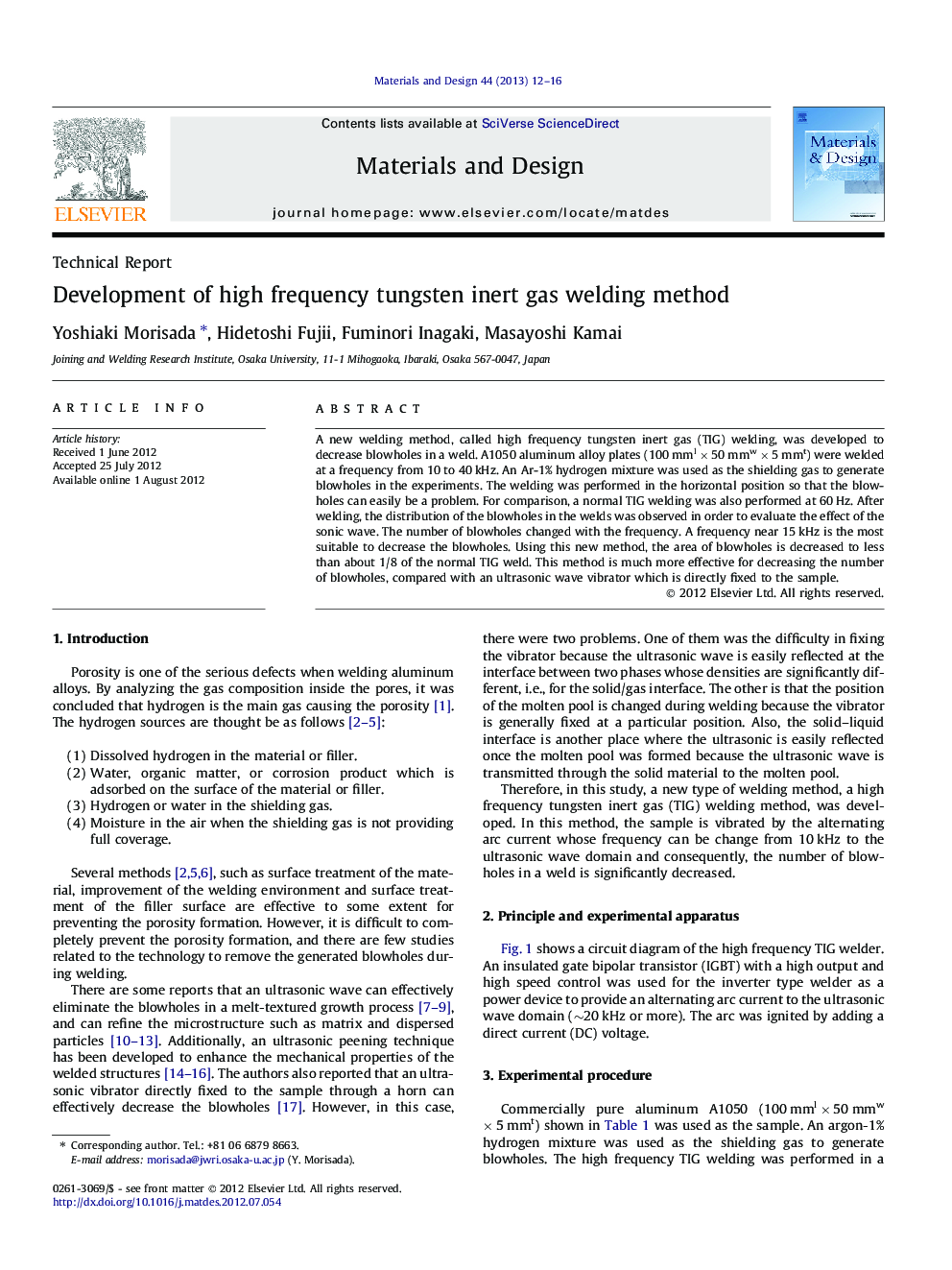| Article ID | Journal | Published Year | Pages | File Type |
|---|---|---|---|---|
| 830301 | Materials & Design (1980-2015) | 2013 | 5 Pages |
A new welding method, called high frequency tungsten inert gas (TIG) welding, was developed to decrease blowholes in a weld. A1050 aluminum alloy plates (100 mml × 50 mmw × 5 mmt) were welded at a frequency from 10 to 40 kHz. An Ar-1% hydrogen mixture was used as the shielding gas to generate blowholes in the experiments. The welding was performed in the horizontal position so that the blowholes can easily be a problem. For comparison, a normal TIG welding was also performed at 60 Hz. After welding, the distribution of the blowholes in the welds was observed in order to evaluate the effect of the sonic wave. The number of blowholes changed with the frequency. A frequency near 15 kHz is the most suitable to decrease the blowholes. Using this new method, the area of blowholes is decreased to less than about 1/8 of the normal TIG weld. This method is much more effective for decreasing the number of blowholes, compared with an ultrasonic wave vibrator which is directly fixed to the sample.
► A new ultrasonic wave TIG welding method was developed. ► The area of the blowholes decreased to less than about 1/8 in the normal TIG weld. ► The number of blowholes decreased with the decreasing frequency. ► The number of blowholes increased when the frequency was less than 15 kHz. ► The microstructure of the weld was refined by ultrasonic wave.
